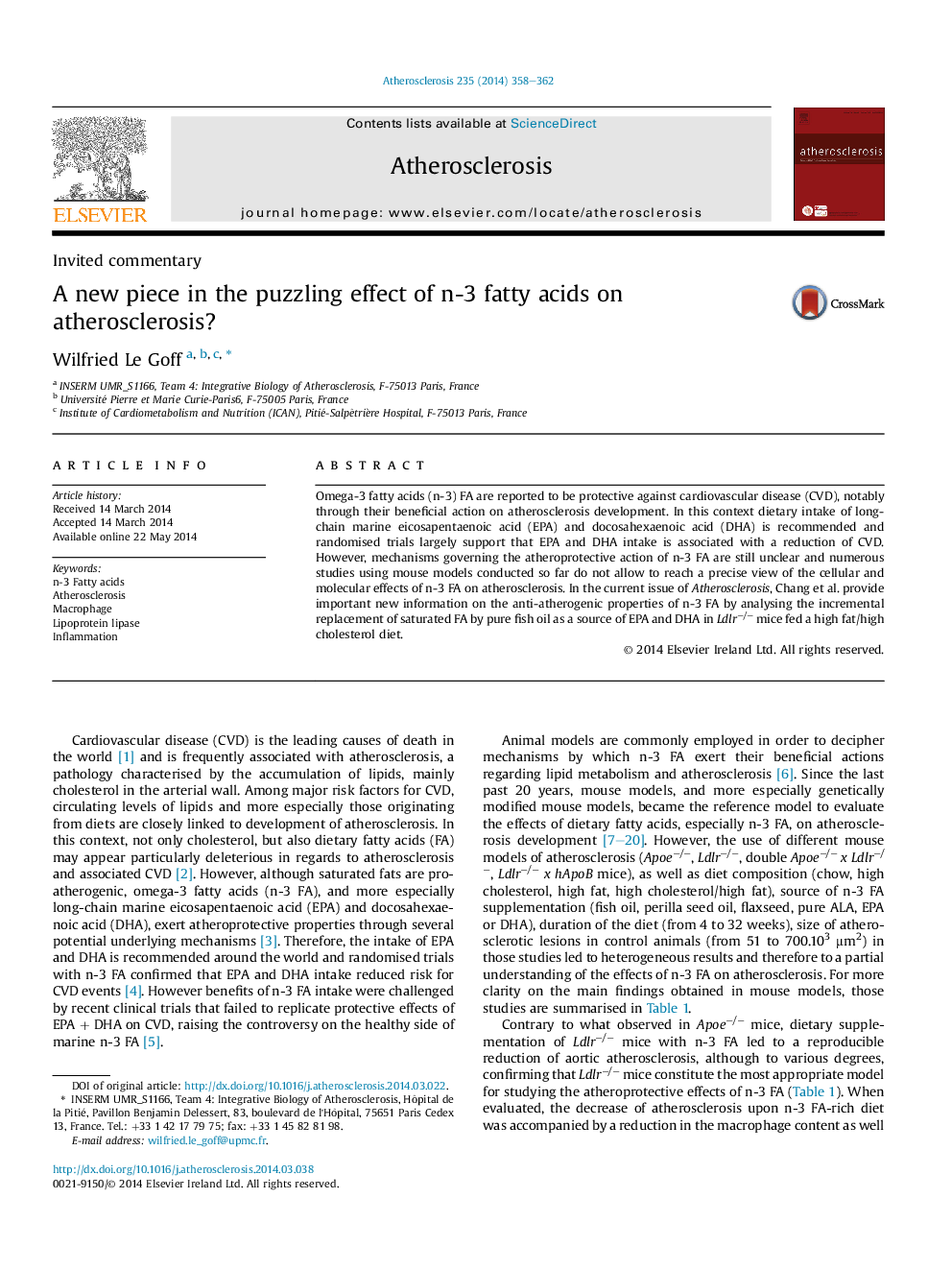| Article ID | Journal | Published Year | Pages | File Type |
|---|---|---|---|---|
| 5946026 | Atherosclerosis | 2014 | 5 Pages |
Abstract
Omega-3 fatty acids (n-3) FA are reported to be protective against cardiovascular disease (CVD), notably through their beneficial action on atherosclerosis development. In this context dietary intake of long-chain marine eicosapentaenoic acid (EPA) and docosahexaenoic acid (DHA) is recommended and randomised trials largely support that EPA and DHA intake is associated with a reduction of CVD. However, mechanisms governing the atheroprotective action of n-3 FA are still unclear and numerous studies using mouse models conducted so far do not allow to reach a precise view of the cellular and molecular effects of n-3 FA on atherosclerosis. In the current issue of Atherosclerosis, Chang et al. provide important new information on the anti-atherogenic properties of n-3 FA by analysing the incremental replacement of saturated FA by pure fish oil as a source of EPA and DHA in Ldlrâ/â mice fed a high fat/high cholesterol diet.
Related Topics
Health Sciences
Medicine and Dentistry
Cardiology and Cardiovascular Medicine
Authors
Wilfried Le Goff,
